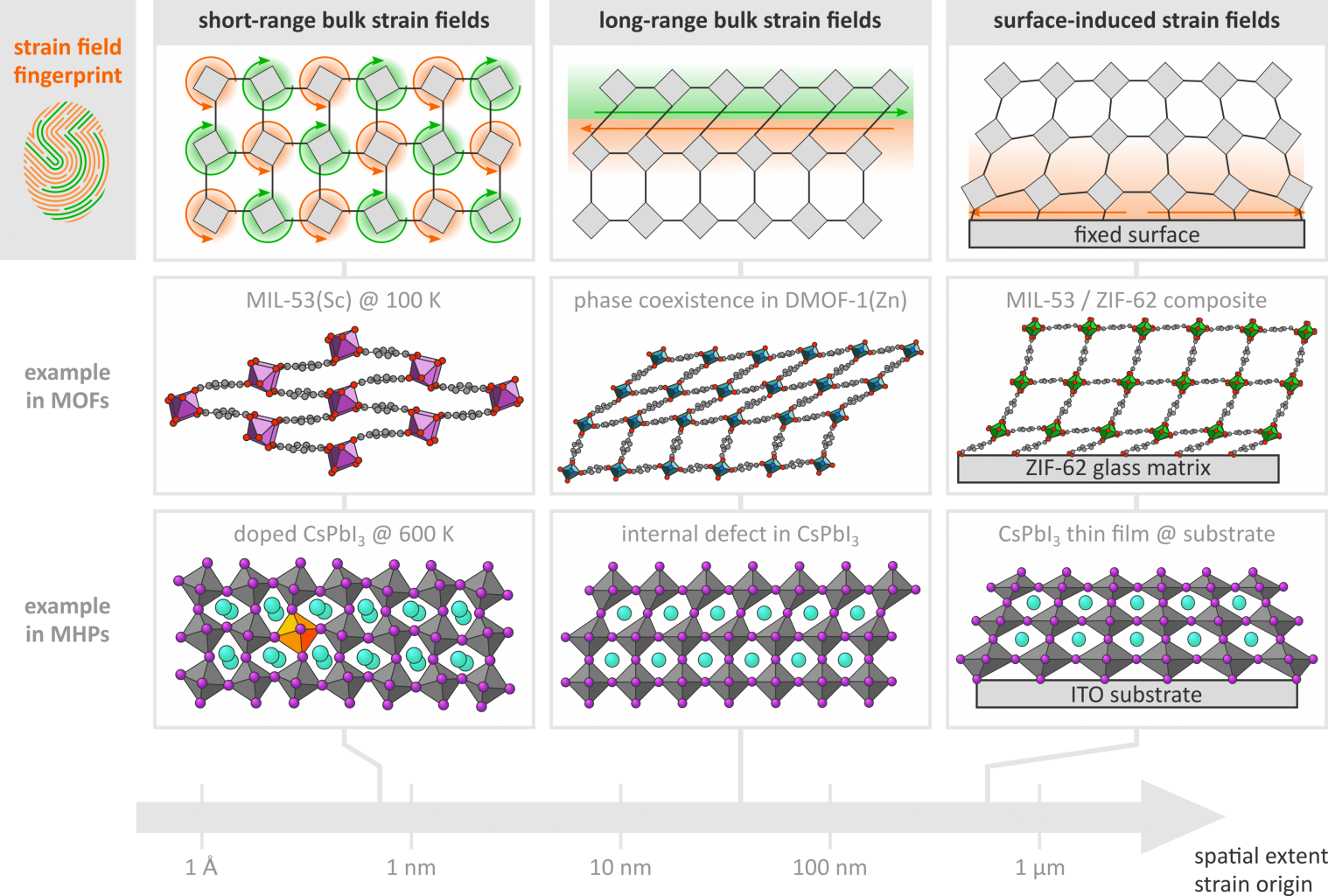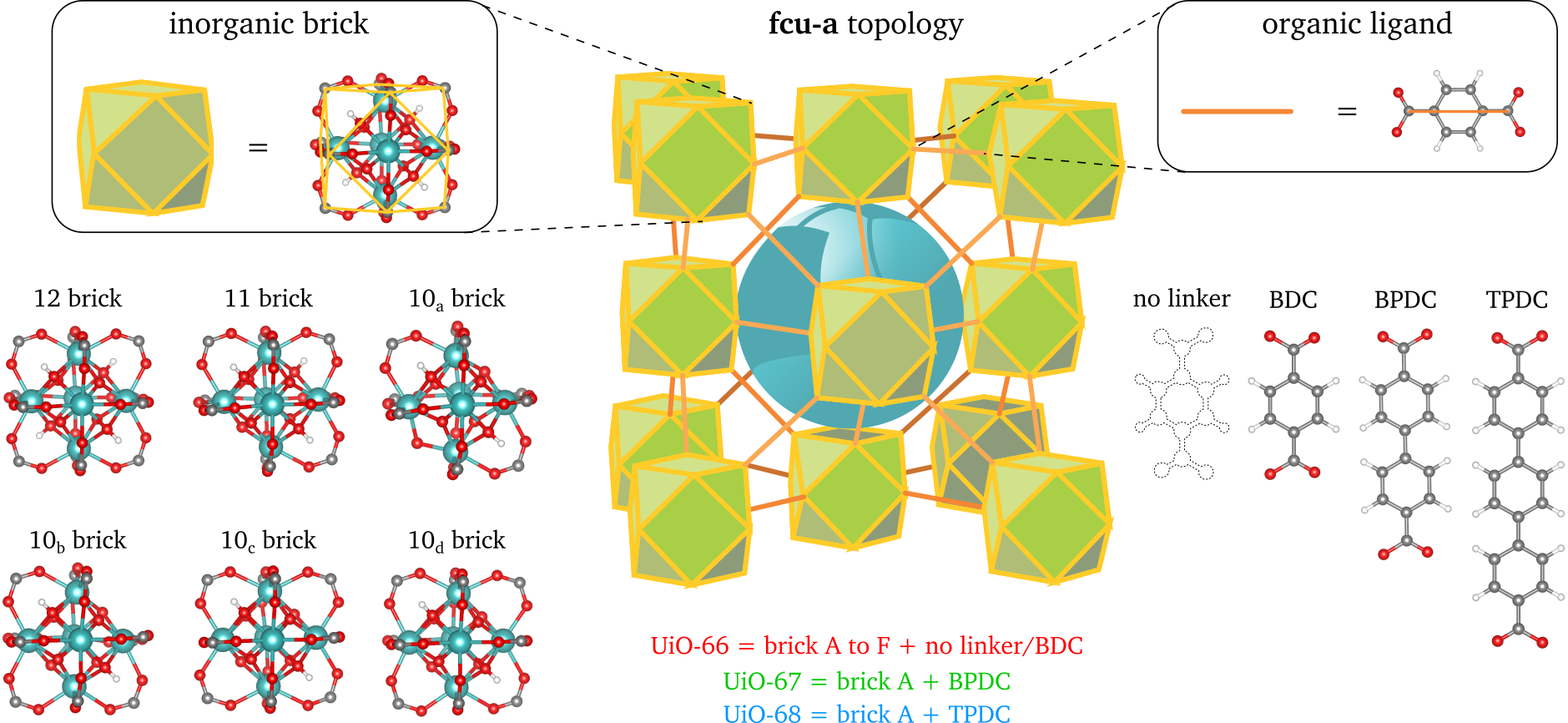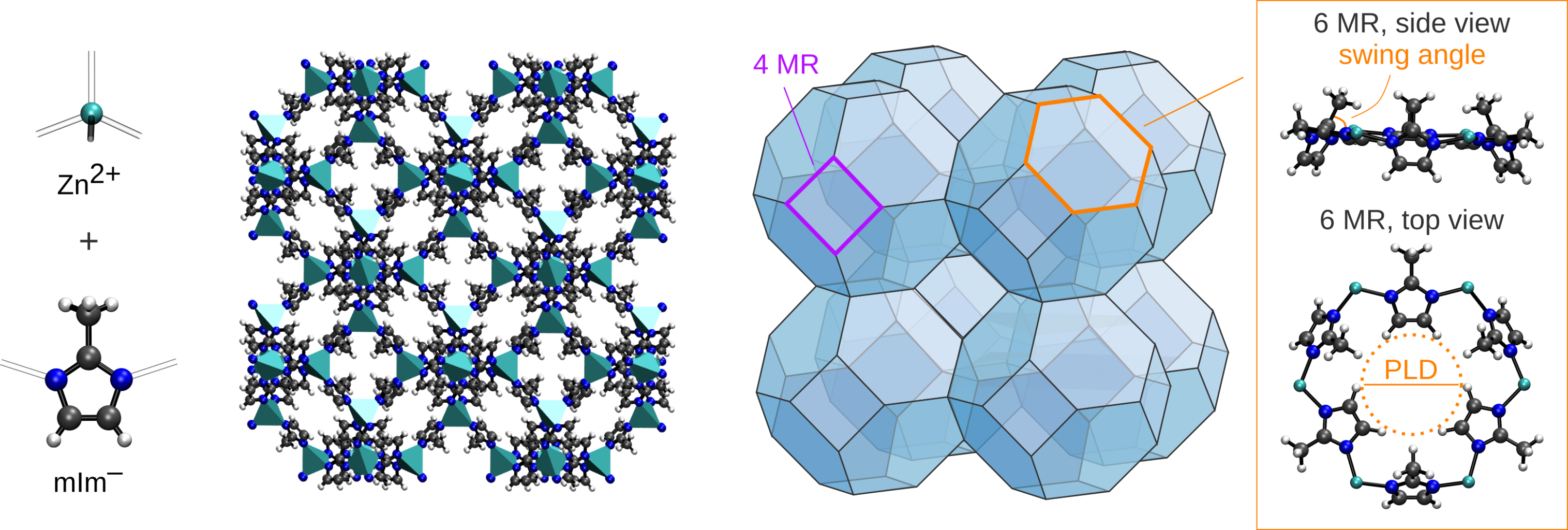Developing cooperative strain fields to study the long-range impact of localized defects in ZIF-8
Developing cooperative strain fields to study the long-range impact of localized defects in ZIF-8
Promotor(en): V. Van Speybroeck, S.M.J. Rogge /25355 / Nanoporous materialsBackground and problem
Defects form part of every realistic solid-state material at room temperature, impacting the material’s properties. They can engender a welcome effect, such as increasing the efficiency of semiconductor devices or modifying the color and associated value of diamonds. In many cases, however, the impact of isolated defects on the material properties is not so clear cut. This is for instance the case for metal-organic frameworks (MOFs), which are nanoporous materials that are proposed for a variety of industrial applications including energy storage, gas separation, and the capture of greenhouse gases due to their attractive properties and vast design opportunities. These scaffold-like materials were originally thought of as being perfectly ordered, crystalline materials. However, recent advances in experimental characterization tools have disproven this ideal picture, and it has become increasingly clear that spatial disorder is inherently present in these materials and alters their macroscopic behaviour [1]. As shown in Figure 1, the different types of spatial disorder in this type of materials may lead to strain, as the material locally deviates from its equilibrium structure. Even though these strain fields originate from very local defects, they can potentially extend throughout the crystal over several tens to hundreds of nanometers, much larger than the nanometer-sized defects they originate from, and therefore impact the macroscopically observed, cooperative response of these materials. As a result, spatial disorder in MOFs–especially isolated disorder that occurs on a nanometer length scale–has emerged as an alternative pathway to design defect-engineered MOFs towards specific applications [2].

To fully exploit the potential of defects to promote MOFs towards functional materials, it is essential to identify how the presence and distribution of defects alter the strain fields inside these MOFs. Accurately accounting for spatial disorder and its effect on macroscopic properties has therefore been recognized as one of the three grand challenges within the computational modelling of MOFs. In a recent study, we investigated the impact of localized defects on the mechanical stability of one of the prototypical MOFs, UiO-66 (see Figure 2) [3, 4]. By including different linker defects in the material, as indicated in Figure 2, we were able to determine that the stability of the material is not only influenced by the number of defects, but also, and primarily, by the distribution of these defects in the material.

Goal
The goal of this thesis is to study how isolated spatial disorder in ZIF-8 generates strain fields and alters its mechanical behaviour, given the importance of this prototypical material. Recently, Schmidt and co-workers performed an extensive study of possible localized defects in ZIF-8, which is shown in Figure 3 [5]. In this thesis proposal, we first aim to propose different defect mechanisms based on our earlier experience with defective MOFs. Furthermore, the energetics of these hypothetical defects will be systematically evaluated, which will allow us to formulate the most probable defect mechanisms present in ZIF-8. In addition, disorder in this material may also be introduced by allowing for mixed metal nodes, further tuning the mechanical performance of ZIF-8.

In a next step, force field models for these defective structures will be developed, based on the generated quantum mechanical data using an in-house developed protocol [6]. A force field approximates the complex potential energy surface by simple analytical expressions and allows to simulate larger systems for a longer time in contrast with a full quantum mechanical treatment. Properties such as the bulk modulus, shear modulus, loss-of-crystallinity pressure, and thermal expansion will be determined using computational procedures which were recently developed at the CMM and will be compared with available experimental data. In this way, we will be able to predict how the intrinsic spatial disorder in ZIF-8 impacts its mechanical properties through strain fields for the first time. Moreover, if time permits, these findings will be expanded to also account for ZIF-8 surfaces, so to account for the finite size of these MOF crystals.
The student will be actively coached to make him/her acquainted with the advanced simulations techniques early in the thesis year, and to transfer necessary programming skills needed to perform the research.
- Study programmeMaster of Science in Engineering Physics [EMPHYS], Master of Science in Physics and Astronomy [CMFYST]Keywordsdefects, spatial disorder, strain fields, Metal-organic frameworks, mechanical stabilityReferences
[1] T. D. Bennett, A. K. Cheetham, A. H. Fuchs and F.-X. Coudert, “Interplay Between Defects, Disorder and Flexibility in Metal-Organic Frameworks,” Nat. Chem., vol. 9, no. 1, pp. 11-16, 2017.
[2] Z. Fang, B. Bueken, D. E. De Vos and R. A. Fischer, “Defect-Engineered Metal-Organic Frameworks,” Angew. Chem., Int. Ed., vol. 54, no. 25, pp. 7234-7254, 2015.
[3] S. M. J. Rogge, J. Wieme, L. Vanduyfhuys, S. Vandenbrande, G. Maurin, T. Verstraelen, M. Waroquier and V. Van Speybroeck, "Thermodynamic Insight in the High-Pressure Behavior of UiO-66: Effect of Linker Defects and Linker Expansion," Chem. Mater., vol. 28, no. 16, pp. 5721-5732, 2016.
[4] S. M. J. Rogge, P. G. Yot, J. Jacobsen, F. Muniz-Miranda, S. Vandenbrande, J. Gosch, V. Ortiz, I. E. Collings, S. Devautour-Vinot, G. Maurin, N. Stock and V. Van Speybroeck, “Charting the Metal-Dependent High-Pressure Stability of Bimetallic UiO-66 Materials,” ACS Materials Lett., vol. 2, no. 4, pp. 438-445, 2020.
[5] C. Zhang, C. Han, D. S. Sholl and J. R. Schmidt, “Computational Characterization of Defects in Metal–Organic Frameworks: Spontaneous and Water-Induced Point Defects in ZIF-8,” J. Phys. Chem. Lett., vol. 7, no. 3, pp. 459-464, 2016.
[6] L. Vanduyfhuys, S. Vandenbrande, J. Wieme, M. Waroquier, T. Verstraelen and V. Van Speybroeck, “Extension of the QuickFF force field protocol for an improved accuracy of structural, vibrational, mechanical and thermal properties of metal–organic frameworks,” J. Comput. Chem., vol. 39, no. 16, pp. 999-1011, 2018.
